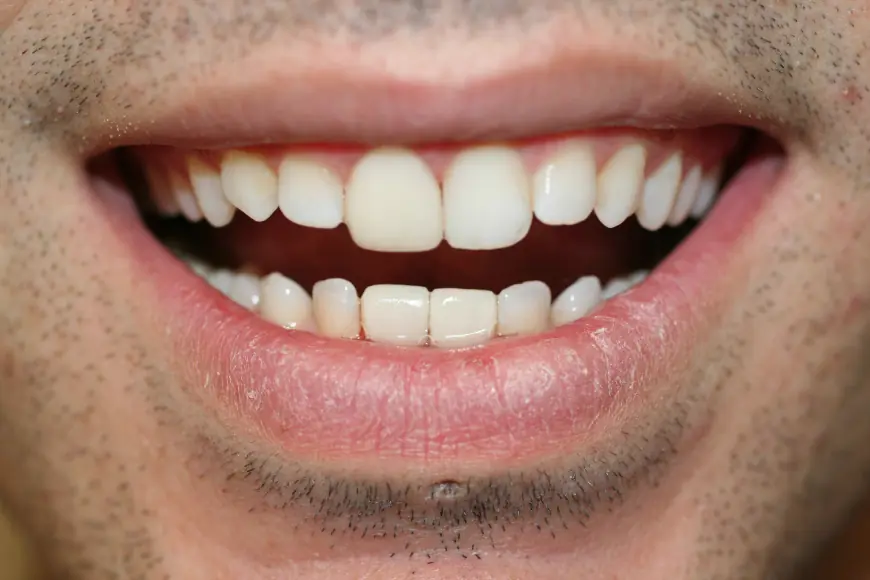How Dental Crowns & Bridges Can Save Damaged Teeth
Do you have broken, chipped, or damaged teeth that you want to fix? You can solve the problem easily. Learn more about Dental Crown and Bridges in Dubai, Abu Dhabi & Sharjah.

Our teeth are incredibly strong, but they are not indestructible. Accidents, decay, and wear over time can lead to severe dental damage, making it necessary to seek restorative treatments. Dental Crown and Bridges Dubai are among the most effective solutions for saving and protecting damaged teeth. These restorative dental procedures not only improve functionality but also restore the aesthetics of your smile. In this article, we will explore how dental crowns and bridges can help preserve damaged teeth, their benefits, the procedures involved, and how to maintain them for long-term oral health.
What Are Dental Crowns?
A dental crown is a cap-like structure placed over a damaged or weakened tooth. It is designed to restore the tooth’s shape, size, strength, and appearance. Crowns are commonly used to:
-
Protect a weakened tooth from further damage
-
Restore a broken or severely worn-down tooth
-
Cover a tooth with a large filling when there isn’t enough natural tooth left
-
Support a dental bridge
-
Cover misshapen or discolored teeth
-
Cap a dental implant
Crowns are typically made from materials such as porcelain, ceramic, metal, or a combination of materials, offering durability and a natural look.
What Are Dental Bridges?
A dental bridge is used to replace one or more missing teeth. It consists of artificial teeth (pontics) that are anchored by dental crowns placed on the adjacent natural teeth or implants. Bridges help to:
-
Restore the ability to chew and speak properly
-
Maintain facial shape by preventing bone loss
-
Distribute bite force evenly across teeth
-
Prevent remaining teeth from shifting out of position
Bridges are usually made from porcelain fused with metal or ceramic, ensuring both strength and a natural appearance.
How Dental Crowns Save Damaged Teeth:
-
Strengthening Weakened Teeth When a tooth is significantly weakened due to decay, a large filling, or a root canal, a crown reinforces its structure, preventing fractures and further deterioration.
-
Protecting After a Root Canal After undergoing a root canal treatment, the tooth loses much of its original strength. A crown provides the necessary reinforcement to protect it from future damage.
-
Restoring Aesthetics and Functionality Crowns restore the shape, color, and size of the tooth, allowing patients to regain confidence in their smiles while ensuring normal chewing and speaking functions.
-
Preventing Tooth Loss Without a crown, a damaged tooth is more likely to deteriorate and require extraction. Crowns help save the natural tooth structure and avoid tooth loss.
How Dental Bridges Save Damaged and Missing Teeth:
-
Preventing Shifting of Teeth When a tooth is lost, the neighboring teeth tend to shift toward the empty space, leading to misalignment and bite problems. Bridges prevent this movement by filling the gap.
-
Restoring Chewing and Speaking Ability Missing teeth can make it difficult to chew food properly and may affect speech. Bridges restore these functions, allowing for better digestion and clearer speech.
-
Preserving Facial Structure Tooth loss can lead to bone resorption, causing the facial structure to sag over time. Bridges help maintain facial shape by providing necessary support.
-
Enhancing Smile Appearance A well-fitted bridge blends seamlessly with natural teeth, restoring the beauty of your smile and boosting self-confidence.
The Procedure for Dental Crowns and Bridges:
Step 1: Initial Consultation:
Your dentist will examine your teeth, take X-rays, and discuss your treatment options. They will determine if you need a crown, a bridge, or other restorative treatment.
Step 2: Tooth Preparation:
For a Dental Crown and Bridges in Dubai, the affected tooth is reshaped to make room for the crown. For a bridge, the adjacent supporting teeth (abutments) are also reshaped to accommodate the crowns that will hold the bridge.
Step 3: Impression and Temporary Crown/Bridge:
An impression of the prepared teeth is taken to create a custom-fit crown or bridge. A temporary restoration is placed to protect the teeth while the permanent one is being crafted in the dental lab.
Step 4: Placement of the Permanent Crown/Bridge:
Once ready, the permanent crown or bridge is carefully adjusted for fit and cemented into place, ensuring comfort and functionality.
Caring for Your Dental Crowns and Bridges:
To ensure longevity, it is essential to practice good oral hygiene:
-
Brush and Floss Regularly: Use a soft-bristled toothbrush and floss daily to prevent plaque buildup around the restoration.
-
Avoid Hard and Sticky Foods: These can cause damage to crowns and bridges.
-
Regular Dental Checkups: Routine dental visits help monitor the condition of the restoration and address any issues early.
-
Use a Mouthguard (if needed): If you grind your teeth at night, wearing a nightguard can prevent unnecessary wear on your crown or bridge.
Conclusion:
Dental crowns and bridges are invaluable solutions for restoring damaged and missing teeth. They not only strengthen and protect weakened teeth but also enhance your smile and overall oral health. If you have damaged or missing teeth, consult your dentist to explore whether crowns or bridges are the right option for you. With proper care and regular dental visits, these restorations can last for many years, allowing you to enjoy a healthy and confident smile.












